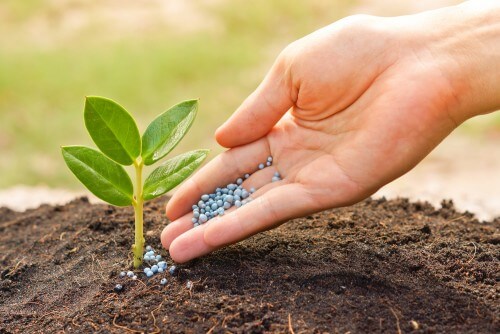Scientists have succeeded in developing a catalyst capable of performing an activity that occurs only in nature: absorbing nitrogen from the air and converting it to ammonia under normal conditions. The new method, based on exposure to light, provides future promise for the production of more environmentally friendly fertilizers. Ammonia is the essential ingredient in the production of fertilizers.

[Translation by Dr. Nachmani Moshe]
Scientists have succeeded in developing a catalyst capable of performing an activity that occurs only in nature: absorbing nitrogen from the air and converting it to ammonia under normal conditions. The new method, based on exposure to light, provides future promise for the production of more environmentally friendly fertilizers. Ammonia is the essential ingredient in the production of fertilizers.
Scientists from Northwestern University succeeded in developing a catalyst capable of performing an activity that exists only in nature: taking nitrogen from the air and converting it to ammonia under normal conditions. The new method, based on exposure to light, provides future promise for the production of more environmentally friendly fertilizers. Ammonia is the essential ingredient in the production of fertilizers.
"This is a particularly important reaction - the conversion of nitrogen to ammonia under mild conditions," said Professor of Chemistry Mercouri G. Kanatzidis, who is the principal investigator. "Scientists have been fascinated by the biological enzyme nitrogenase for over 60 years (Wikipedia) which accelerates the reaction occurring in nature. Now, we have succeeded in creating a successful replica of the natural process." Plants rely on nitrogen fixation from the air for their nourishment and growth. Plants are not able to absorb nitrogen directly from the air, so their nutrient must be in a diluted form of ammonia.
The new method uses light to speed up this important reaction. The process, in which solar energy is used to convert nitrogen into ammonia, provides an efficient alternative to the Bar-Bosch process (Wikipedia), the standard industrial process for ammonia production, explains the researcher. This process consumes more than XNUMX percent of the world's energy supply. The research findings have long been published in the scientific journal Journal of the American Chemical Society.
Although the research is currently only in the proof-of-concept stage, this is a very impressive discovery. Nitrogen is a particularly stubborn substance - it does not tend to react with other substances and it is very difficult to break down the chemical bonds within it. In order to attack this problem, the researchers turned to an interesting substance they had managed to develop earlier, calcogel (Wikipedia). This porous material, similar to a sponge, provides a huge surface area, an ability that is a great advantage. The researchers created calcogel using a cluster of iron, molybdenum and sulfur (FeMoS) atoms, the main metals found in the nitrogenase enzyme that recycles nitrogen. "Thanks to its large surface area, the material provides a huge number of active sites within which the nitrogen can react during its flow through the material," explains the researcher.
Another advantage of calcogel is its color: it is black, so it is able to absorb a lot of light. The researchers believed that they were able to utilize this energy. "We thought to ourselves - let's conduct a crazy experiment - we will stimulate the calcogel with light, supply it with nitrogen and check if the material will return the nitrogen to ammonia. To our great surprise, we saw ammonia production, with its rate becoming more and more vigorous with the passage of time." The aggregate inside the calcogel (FeMoS) binds to nitrogen and recycles it with the help of 8 electrons, creating two ammonia molecules and one hydrogen molecule, just as occurs in nature. The researchers verified that indeed the ammonia formed originates from nitrogen and not from another source. "The calcogel catalyst is extremely durable - it is able to operate again and again and again," explains the lead researcher. "For comparison, nitrogenase in biological systems must rebuild itself every 8-6 hours." Despite this, the researchers concluded that their catalyst is 1000 times slower than the natural enzyme. "However, the natural enzyme had 3-2 billion years to develop," justifies the lead researcher. "We are happy to discover that our material recycles nitrogen just like the natural enzyme. This is a great starting point and now we are trying to understand exactly how this substance works and how we can increase its rate of activity. We have already managed to achieve progress in this direction."
